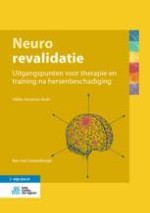Samenvatting
Plasticiteit is veranderbaarheid: een fundamentele eigenschap van ieder neuron en van het zenuwstelsel als geheel. Het is de biologische basis van ontwikkeling, leren en herstel. Plasticiteit van hersensystemen verklaart dat ieder brein individueel uniek is. Plasticiteit zit overal: van moleculen tot gedrag, op ieder neuraal niveau (perifeer, ruggenmerg, hersenen) en in ieder functioneel systeem. Het leren van een vingervaardigheid (bijv. handwerken) heeft zijn biologische basis in plastische veranderingen op ieder niveau: de neurale representaties van de betrokken vingers nemen toe (bijv. vingers van de linkerhand bij het leren vioolspelen). Een congenitaal blinde gebruikt zijn ‘visuele’ schors voor braille, een dove zijn ‘akoestische’ schors voor het begrijpen van gebarentaal: de zintuigsystemen ‘helpen’ elkaar. Zelfs nieuwvorming van neuronen is mogelijk; we weten alleen nog niet waarom en wanneer. Een gezond brein is plastisch en deze plasticiteit is tot op zekere hoogte te beïnvloeden, bijvoorbeeld door leerervaringen, omgevingsstructuur, lichamelijke activiteit.
